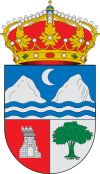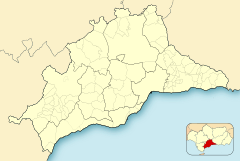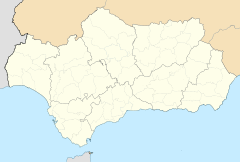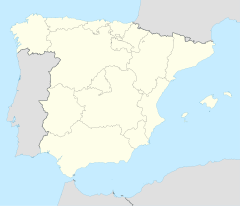Istán facts for kids
Quick facts for kids
Istán
|
||
|---|---|---|
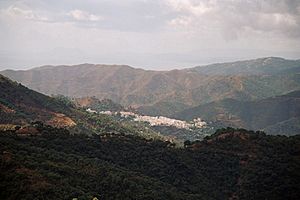
View of Istán from the Sierra de las Nieves with the coast and Gibraltar in the background
|
||
|
||
| Country | ||
| Autonomous community | ||
| Province | Málaga | |
| Population
(2018)
|
||
| • Total | 1,458 | |
| Demonym(s) | Panochos | |
| Time zone | UTC+1 (CET) | |
| • Summer (DST) | UTC+2 (CEST) | |
Istán is a charming town and municipality in southern Spain. It is located in the province of Málaga, within the region of Andalusia. In 2005, about 1400 people lived there.
This town sits beneath the Sierra Blanca mountains. It is found in the green valley of the Rio Verde river. Istán is about 15 kilometers (9 miles) northwest of Marbella. Marbella is a well-known city on the Mediterranean coast. Istán is also on the southern slope of the Sierra de las Nieves mountains.
A large reservoir is near Istán. This lake was created by the Presa de la Concepción dam. The dam was built in 1972. Its main purpose is to provide drinking water to towns along the Costa del Sol.
Contents
Istán's Story: From Ancient Times
Moorish Roots
Istán was first settled by the Moors. The Moors were people from North Africa who lived in Spain for many centuries. Like its nearby town, Ojen, Istán survived because it was not directly on the coast.
After the Reconquista, which was when Christian kingdoms took back control of Spain, Moors were not allowed to live near the coast. This rule made it harder for them to communicate with their relatives in North Africa.
The Acequia del Chorro: An Ancient Water System
The influence of the Moors can still be seen in Istán today. One example is the Acequia del Chorro. An acequia is a special water channel. The Moors built these channels to carry water for farming. They are similar to the levadas found in Madeira. These ancient water systems are still visible and used in Istán.
See also
 In Spanish: Istán para niños
In Spanish: Istán para niños


